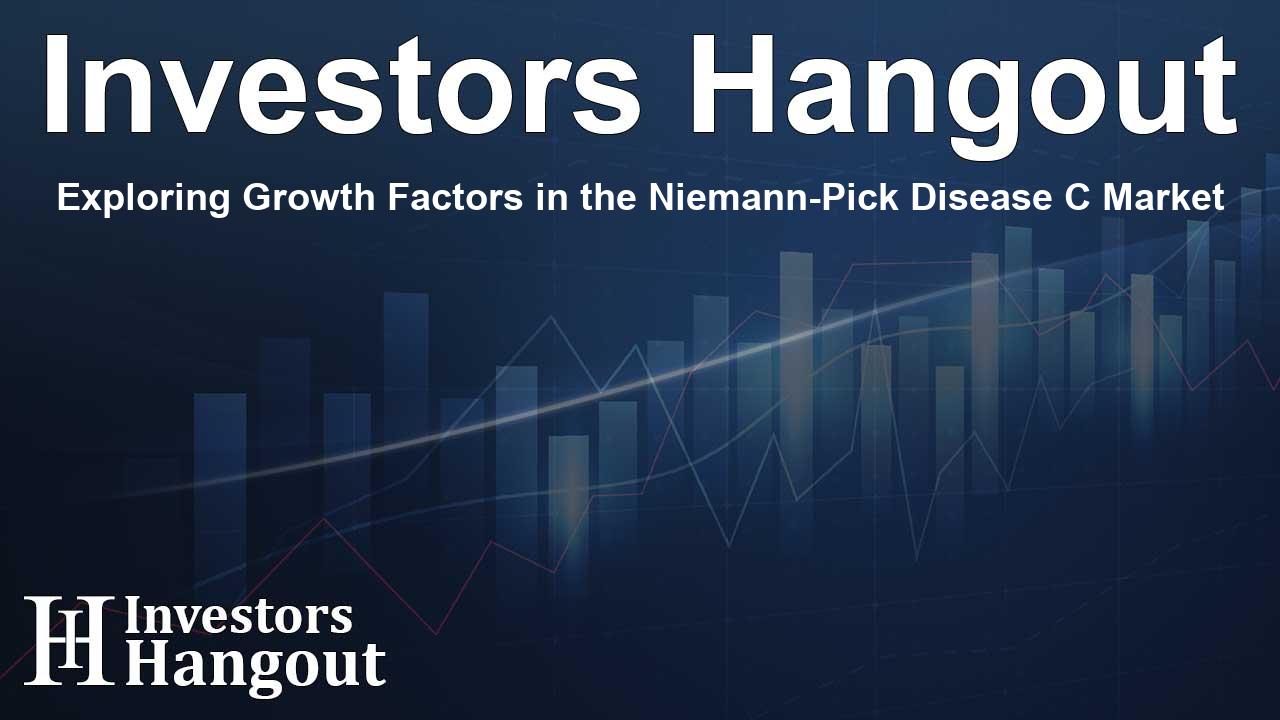Exploring Growth Factors in the Niemann-Pick Disease C Market

Overview of Niemann-Pick Disease Type C
Niemann-Pick Disease Type C (NPC) is a rare, progressive disorder that primarily affects lipid metabolism, causing a build-up of unesterified cholesterol and glycosphingolipids in various tissues, including the nervous system. This accumulation leads to significant neurological and visceral complications. Understanding the nuances of this disease's pathology is crucial for developing effective treatments.
The Current Market Landscape
The market for Niemann-Pick Disease Type C has grown due to the urgent need for effective treatments, highlighted by limited existing therapies and high patient demand for novel solutions. As of the early 2020s, the NPC market was largely underdeveloped. However, with emerging drug candidates gaining traction, this is set to change.
Market Statistics
Recent analyses indicate that the NPC market was valued at around USD 60 million in major markets, showcasing a significant unmet need. Approximately 1000 diagnosed cases of NPC were recorded, establishing its classification as an ultra-rare disease. The United States is a leading country in NPC treatment adoption, accounting for about 60% of the current market share.
Advancements in Treatment Options
Despite the challenges faced by NPC patients, several emerging therapies offer hope. These include innovative therapies targeting various aspects of NPC’s pathology, such as:
- Trappsol Cyclo: A hydroxypropyl ?-cyclodextrin formulation designed to enhance cholesterol clearance from lysosomes.
- Nizubaglustat (AZ-3102): An oral small-molecule candidate that modifies lipid metabolism to prevent the accumulation of harmful lipids.
- Adrabetadex (VTS-270): A promising early-stage therapy aiming to address specific disease mechanisms.
Emerging Pipeline of Treatments
The therapeutic pipeline for Niemann-Pick Disease Type C is varied and promising, featuring treatments at various developmental stages. There is a strong focus on gene therapy and advanced breastfeeding methods that target the root causes of lipid accumulation.
Drivers of Market Growth
Several factors are contributing to the anticipated growth of the Niemann-Pick Disease Type C market:
Increased Awareness and Diagnosis
Awareness of NPC among healthcare professionals and patients is on the rise, which leads to earlier diagnoses and a better understanding of the disease's complexities. This is crucial to improving patient outcomes.
Technological Advancements
Advancements in genetic research, including gene editing technologies like CRISPR-Cas9, have opened up new avenues for treatment through targeted therapies. Clinical trials continue to explore these innovative approaches, aiming to shift the treatment landscape significantly.
Challenges in Current Management
The management of Niemann-Pick Disease Type C remains primarily symptomatic, as no therapies are yet approved to alter the disease's course. Current treatments include:
- AQNEURSA: A recently approved therapy for managing neurological symptoms, indicating progress in addressing the disease's impact.
- MIPLYFFA: The first oral treatment approved in 2024, it works in conjunction with other therapies to manage symptoms effectively.
This underscores the importance of ongoing research to address the broader therapeutic landscape
Competitive Landscape and Future Outlook
Several companies, including Cyclo Therapeutics and Azafaros, are advancing their pipelines dedicated to Niemann-Pick Disease Type C. Their R&D endeavors are crucial for driving progress in treatment options available to patients. As these emerging therapies enter the market, they are expected to reshape the future of NPC management significantly.
Frequently Asked Questions
What is Niemann-Pick Disease Type C?
Niemann-Pick Disease Type C is a progressive genetic disorder that affects lipid metabolism, leading to severe neurological and visceral complications due to cholesterol accumulation.
What are the symptoms of Niemann-Pick Disease Type C?
The symptoms can vary significantly but typically include developmental delays, motor dysfunction, and difficulties with swallowing and cognition.
How is Niemann-Pick Disease Type C diagnosed?
Diagnosis often involves clinical evaluation, genetic testing, and imaging studies to assess the extent of neurological involvement.
What treatments are available for Niemann-Pick Disease Type C?
Current treatments focus on symptom management, with emerging therapies aiming to tackle the underlying causes, including AQNEURSA and MIPLYFFA.
What is the expected growth of the Niemann-Pick Disease Type C market?
The market is projected to experience substantial growth due to the introduction of new therapies and increased awareness, with estimates suggesting a CAGR of 14.8% during the forecast period.
About The Author
Contact Henry Turner privately here. Or send an email with ATTN: Henry Turner as the subject to contact@investorshangout.com.
About Investors Hangout
Investors Hangout is a leading online stock forum for financial discussion and learning, offering a wide range of free tools and resources. It draws in traders of all levels, who exchange market knowledge, investigate trading tactics, and keep an eye on industry developments in real time. Featuring financial articles, stock message boards, quotes, charts, company profiles, and live news updates. Through cooperative learning and a wealth of informational resources, it helps users from novices creating their first portfolios to experts honing their techniques. Join Investors Hangout today: https://investorshangout.com/
The content of this article is based on factual, publicly available information and does not represent legal, financial, or investment advice. Investors Hangout does not offer financial advice, and the author is not a licensed financial advisor. Consult a qualified advisor before making any financial or investment decisions based on this article. This article should not be considered advice to purchase, sell, or hold any securities or other investments. If any of the material provided here is inaccurate, please contact us for corrections.
